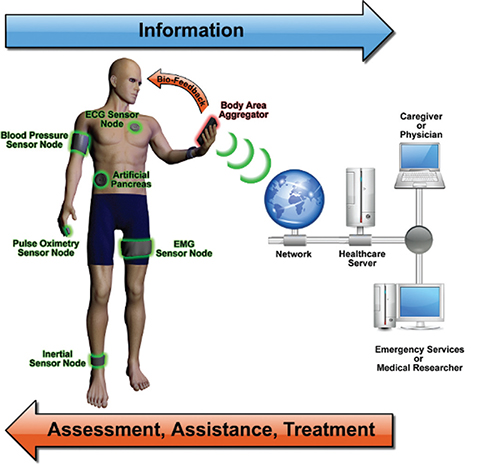There is no doubt that medical and healthcare applications represent major opportunities for electronic equipment manufacturers and their sensor suppliers. The applications include hospital and clinics, doctors’ offices, remote wireless healthcare, and portable personal area network (PAN) diagnostics and monitoring. ABI Research projects the market for wearable wireless sensors to grow to more than 400 million devices by 2014. The report, “Wearable Wireless Sensors” identifies three broad categories for this growth: health and fitness, at-home health monitoring, and professional healthcare telemedicine.
More recently, a new report from ABI Research projects wearable wireless sensors for fitness and wellness monitoring will approach 80 million devices by 2016, growing at a 46% CAGR from 2010 to 2016. ABI Research principal analyst Jonathan Collins has identified the primary reason for the high growth. “These devices don’t require the same level of complexity and regulation to deploy that healthcare devices do,” he says.
Using the rapidly improving wireless communication technologies and advanced sensors available today, many companies and universities are proposing solutions for healthcare applications. University of Virginia researchers have described how body area sensor networks (BASNs) can measure physiological, biokinetic, and ambient phenomena. Figure 1 shows the interaction of the sensors and the network.
To design these systems, several semiconductor technologies are required. For example, Freescale Semiconductor has a broad range of technologies for body area network (BAN) measurements and communications in healthcare and other applications. They have developed a packaging concept to integrate these technologies into a compact form factor. Figure 2 shows the approach using pressure sensors, gyroscopes and accelerometers.

